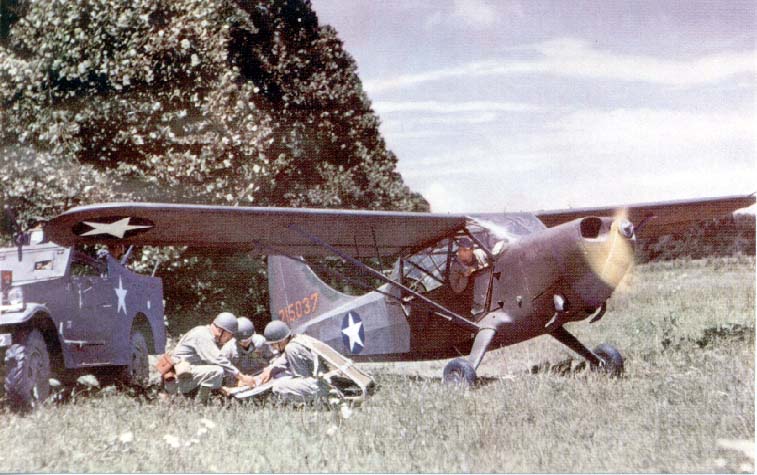Soon after the creation of the Army Air Force, a distinction was made between "regular" Air Forces and those meant to specifically support ground forces with artillery spotting, when on June 6, 1942 the Secretary of War established organic army aviation. Soon, organic army aviation took on roles far beyond assisting with artillery, which this section of the exhibit will look at. Organic aviation aircraft proved to be very successful in assisting in helping adjust artillery fire, and were immediately put into other reconnaissance roles.

Armed with only a camera, this slow moving Stinson L-5 could be an easy target for ground forces, and those who flew in them were certainly a brave lot.

This image showing a Jeep and a Taylorcraft L-2 demonstrates the unification of Army ground and air forces.

An example of the type of intelligence that could be gained from observation aircraft. This image is from the Eugene O'brien photo collection, which documents the 125th Liaison Sq. in World War Two.
Other roles that organic army aircraft undertook included medical evacuation, courier service and wire laying. The aircraft used for these missions most commonly were the Piper L-4 Grasshopper and the Stinson L-5 Sentinel.

An L-4 working along side the infantry.

Soldiers preparing a Grasshopper for service.
Although organic army aviation did not use helicopters in the Second World War, they did see some use by America and Germany, and the Army took notice. Soon the helicopter would be a mainstay of Army aviation.

The Sikorsky R-4 is the first American Helicopter to see service in combat.
2001 Pan American Plaza, San Diego, CA
Phone: 619.234.8291
Información En Español
Contact Us
We would like to thank all our sponsors who help us make a difference. Click here to view all who help us.

The San Diego Air & Space Museum is a 501(c)(3) non-profit organization. Federal Tax ID Number 95-2253027.
